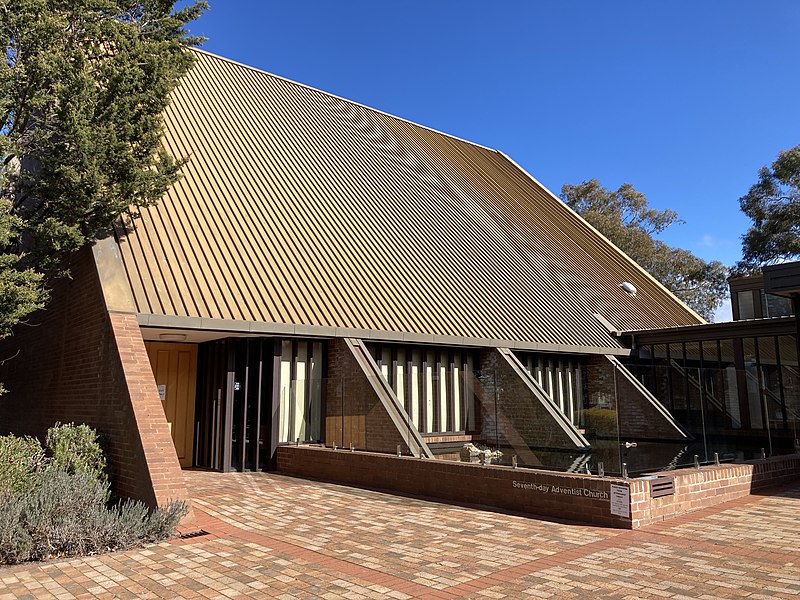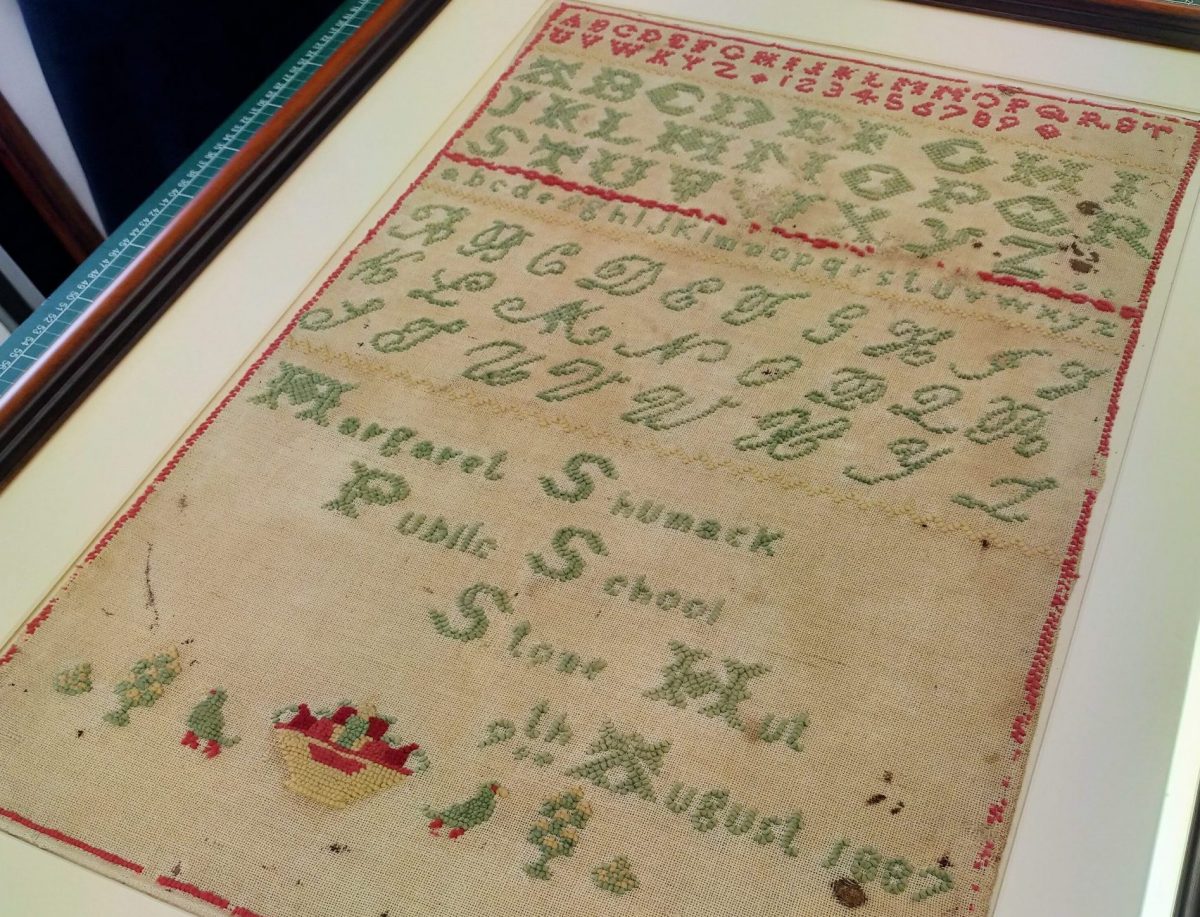
Canberra National Seventh Day Adventist Church. Photo: Wikipedia.
The Canberra National Seventh Day Adventist Church in Turner has been officially heritage listed after meeting two of the criteria.
The church was provisionally listed in February to increase the protection and recognition of modernist architecture in the ACT, and only needed to meet one criteria in the Heritage Act to qualify for official listing.
The statement of historical significance says the church, designed by prominent Australian architect Ken Woolley, is an excellent example of Modernist church design incorporating characteristics of the late 20th century Ecclesiastical and Sydney Regional styles.
These are integrated with unique attributes related to its function as a Seventh Day Adventist Church.
It is thought to be the only church of its kind in Australia that incorporates symbolic aspects of the Seventh Day Adventist liturgy.
It was shown the church demonstrated the principal characteristics of a class of cultural or natural places or objects; and a high degree of creative or technical achievement for a particular period.
The combination of styles includes the red-brown Bowral brick; the painted western red cedar used in the walls and window joinery; and the roll-formed, brown, steel decking used for the roof (Ecclesiastical) and post-1960 Sydney Regional in the asymmetrical shape, a lack of concern in the façade as a presentation front, and the skillion roof.
The windows also provide a mix of the two styles.
Inside, the traditional rectangular seating orientation at a right-angle to the high outer wall and plain white surfaces, is Ecclesiastical.

The Shumack Stone Hut School needlework sampler. Photo: ACT Government.
Woolley deliberately incorporated symbolism into the design, including the central role of water and baptism in Seventh Day Adventist belief.
The placement of the massive external buttresses rising from the courtyard pool suggest the building is rising from the water.
Inside the church, seating is lower than the external pool and the focus of the congregation is on the baptismal font on the right side of the rostrum at the front of the room.
The deliberate play of light within the interior, combined with the white walls, was intended to symbolise purity. A dramatic skylight focuses light on the immersion font.
In 1996, the church received a Royal Australian Institute of Architects (RAIA) Twenty-five Year Award from the the ACT Chapter.
The Heritage Council also confirmed the listing of a needlework sampler from the Shumack Stone Hut School, formerly located in what is now the suburb of Ainslie.
The sampler, currently displayed in the Hall School Museum and Heritage Centre collection, was made by Margaret Shumack as part of her official schooling in 1887 while she was a student at the Stone Hut School.
The heritage statement says the rare object is important to the course of women and children’s history in the ACT, as well as the history of schools and education in 19th century colonial NSW in an area that subsequently became part of the ACT.












